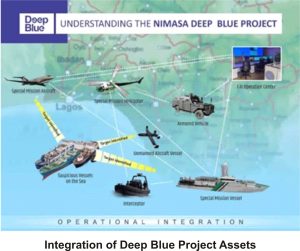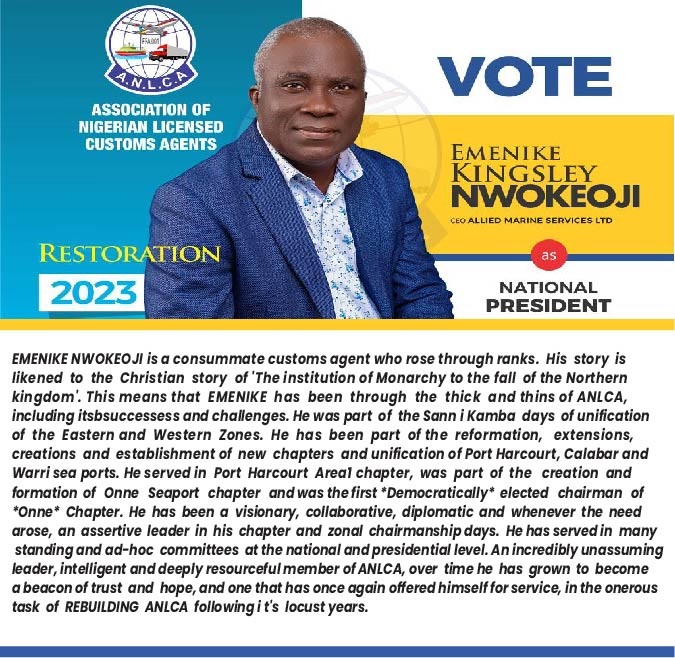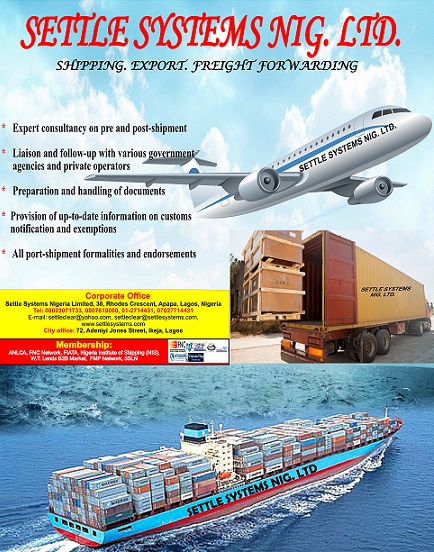By Commodore AA Gaya DSS psc fwc(Paris) BSc MSc
- The Gulf of Guinea is the northernmost part of tropical Atlantic Ocean comprising a vast and diverse region starting from Senegal to Angola covering approximately 6000KM of Coastline. It covers 2 geopolitical and economic areas; The Economic Community of Central African States (ECCAS) and Economic Community of West African States (ECOWAS). This maritime domain is rich in hydrocarbon deposits, mineral resources as well as different species of fisheries and marine resources. The region is also an important shipping zone with a lot of maritime endowments that made it attractive to various criminal elements and non-state actors. These non-state actors exploits the lack of cohesion and diversity of the Gulf of Guinea states, inadequate law of enforcement capacity, corruption, and lack of adequate logistics to engage in maritime criminality such as piracy/armed robbery at sea/kidnap for ransom and environmental pollution. The rich hydrocarbon resources and vast aquatic life in the region also lead to illegal oil bunkering/pipeline vandalism and Illegal, Unreported and Unregulated fishing. The sea lanes have also been exploited for weapons trafficking, drugs and other contraband goods.

- At a time the International Maritime Bureau (IMB) release a report saying the Gulf of Guinea, off the West African coast, is increasingly dangerous to commercial shipping and account for over ninety percent (90%) of maritime kidnappings worldwide. It was also believed that areas off the Niger Delta of Nigeria werean epicenter of piracy in the world. These areas have witnessed hydra-headed and complex trend of attacks by various criminal groups which have greatly hampered the economic viability of the region.
NOTICEABLE TREND OF ATTACKSON SHIPPING
There are some noticeable trends on the mode of attacks on shipping in the Gulf of Guinea that warranted decisive actions by Nigeria. These was informed through careful study of the trends which include area and range of attacks target ships, motives of attack and the use of violence. These are discussed subsequently.
- Area of attacks. The areas off Bayelsa, off Rivers, and off Delta State of Nigeria are believed to be the most affected by acts of piracy and other maritime crimes. Prior to the achievement of the relative peace currently witnessed in the Gulf of Guinea, the aforementioned areas were hot spots for varying degree of maritime crimes. However, there was a paradigm shift where criminals perpetuating these crimes began to abandon their traditional attack zones and spread their influence outside Nigerian waters. This might not be unconnected with robust actions put up by the Nigerian Navy against maritime crimes. It is also owed to the strengthening of the Yaounde Architecture for Maritime Safety and Security. These are achieved using the instrument of the Multinational Maritime Coordination Centre and the West Africa Regional Maritime Security Centre (CRESMAO) for effective response coordination.

- Range of Attacks. The pirates operated deep into the sea up to 244nm, and as far as Cote d’Ivoire to the West and to Gabon and Equatorial Guinea, oftentimes extending to Angola to the East of Nigeria’s epicentre. The wide area coverage by the pirates was informed by a quest for vulnerable and lucrative grounds and a safe haven beyond the reach of states counter piracy efforts. Nigerian Navy, in particular, have some high endurance vessels that can venture deep into the ocean. These have proffered an extended reach and a credible and sustained maritime presence which serves as a deterrent and interception capability in the Gulf of Guinea. More so, there are air assets ranging from rotary to fixed wing maritime patrol aircraft and Unmanned Aerial Vehicles which serve as early warning, interception and intervention capabilities to the Nigerian Navy. Additionally, they enable the attainment of time on task and sustained reach.
- Target Ships. The ships targeted for attacks were mostly Cargo vessels, Container Ships, Supply Vessels and Bulk Carriers which present the possibility of having large number of expatriates onboard. However, the trend gradually shifted to Fishing Trawlers. Their low free board and slow speed during fishing operation made it easier to board by pirates.

- Motives for Attack. Attacks on the aforementioned types of vessels were carried out mainly for monetary or material gains. Historical trend indicates that ships have been attacked and ransacked for valuables such as cash, laptops, mobile phones or any other things of value. Tankers have also been attacked for their contents being either crude oil or refined petroleum products.
- Use of Violence. Pirates in the Gulf of Guinea area known to be heavily armed, rancorous and violent in attacks which sometimes result to trauma, injury or death to victims. They employ intimidation and torture tactics to extort their victims and/or employers. Oftentimes, when their demands are not met, it results in losses of lives and properties.

KEY EVENTS IN THE GULF OF GUINEA
- Gulf of Guinea is currently enjoying a relative calm. The exposé by the International Maritime Bureau on the security situation and non-occurrence of piracy in the Gulf of Guinea during the year under review is a testament to robust security efforts of the Nigerian Navy in the Gulf of Guinea. This have convinced stakeholders to believing that the bad days are over. However, it is pertinent to note that as recent as 2020, there were 195 reported cases of piracy in the whole world with the 3 incidents of vessel hijackings and nine out of the 11 vessels fired upon taking place in the Gulf of Guinea. These pirates attacks included attack and boarding of a Maltese-flagged Chemical tanker off the coast of Benin and kidnapped 15 crew members. A major event worthy of noting is the hijack of HAILUFENG 11.
- HAILUFENG 11 was hijacked on 15 May 2020 at Cote d’Ivoire. The Hijackers sailed the ship towards Ghana maritime border crossing over to Togo. Intelligence report prompted the Beninese Navy about the presence of the pirated ship in their waters. Consequently, Benin Navy responded by dispatching patrol ship ZOU towards the position given by the Chinese Embassy in Cotonou. They notify all the maritime operation centres under the Yaoundé Architecture especially the Multinational Maritime Co-ordination Centre, Zone E. The intervention of the Chinese became expedient because the pirated vessel switched off her AIS making detection difficult. The first position supplied by the Chinese gives the position of the ship at about 130nm South of Cotonou at 1148hrs on 16 May2020. Unfortunately, HAILUFENG 11 slipped into Nigerian waters.
![]()
- On the Nigerian side, NNS NGURU cast off at about 1350 on 16 May 2020 with seven (07) NN Special Boat Service (SBS) personnel embarked. The boat proceeded to the sea towards the last reported position of HAILUFENG 11. However, the hijacked vessel was intercepted at about 2045 at a position 140nm south of Lagos Fairway Buoy. The vessel ignored all orders to surrender via loud hailer and VHF radio. Warning and later direct shots were fired at the superstructure. Anon–compliant/opposed boarding was executed when all effort to stop the ship proved abortive. The Nigerian Navy Special Boat Service boarded the HAILUFENG 11 when she was proceeding at a speed of 9.5 knots. The boarding team took control of the ship at 2210 and rescued 18 crew members consisting of 8 Chinese, 3 Ghanaians and 7 Ivorians. The ten (10) pirates arrested were of Nigerian origin who left Nigeria by road to Ghana. While in Ghana, they made an attempt to hijack a vessel but failed. The criminals later decided to move to Cote d’Ivoire and made another attempt using wooden boat which resulted in the hijack of MV HAILUFENG 11.
To achieve the legal end, the criminals were tried under the Suppression of Piracy and other Maritime Offences Act 2019. The court sentenced the 10 criminals to 12 years imprisonment with additional fine of Two Hundred and Fifty Thousand Naira only (N250, 000.00) on each of the 3 count charges.

STRATEGIES ADOPTED BY NIGERIA
- Nigeria has adopted an improved strategy for effective naval presence at sea and ashore. This was achieved through creation of new naval bases in Lagos State as well as Forward Operating Bases in Lekki and Oguta Lake in Imo State. The Nigerian Navy have also established bases in the hinterlands of Cross River and Niger States such as Naval Base MFUM and Naval Base SHAGUNU respectively. The Nigerian Navy also established a type A Naval Base in Lake Chad, Borno State. Other efforts emplaced by the Nigeria include fleet capitalization for the Nigerian Navy as well as Integrated National Security and Waterways Protection Infrastructure. These are discussed subsequently.
FLEET RECAPITALIZATION
- In recent time the Nigerian Navy took delivery of a new survey ship, NNS LANA in 2021, and NNS KADA in May 2022. There are also other platforms awaiting delivery to the Nigerian Navy these include High endurance offshore patrol vessels, fast patrol boats, Aluminum Airboats, new Helicopters, various brand of unmanned Aerial vehicles. Induction of these Maritime assets has enhance the Navy’s deterrence capabilities and would make the Gulf of Guinea even safer.

NIMASA DEEP BLUE PROJECT
- The Deep Blue project otherwise known as the Integrated National Security and waterways protection infrastructure was launched by Nigeria’s President Muhammadu Buhari on 10 June 2021. The project was finance by the Nigerian Ministry of Transportation and Ministry of Defense, through the Nigerian Maritime Administration and Safety Agency NIMASA and is consisting of Land, Maritime and Air Assets.
- DEEP BLUE LAND ASSETS. The Deep Blue land Assets includes the Command, Control Communication Computer, and Intelligence Centre (C4i) for intelligence gathering and data collection, 16 armored vehicles for coastal patrol and 600 specially trained troops for interdiction operation, known as the Marine Security Unit.

- THE MARITIME AND AIR ASSETS. The Maritime Assets consist of special mission ships, seventeen fast interceptor boats while the air assets comprised two special mission maritime patrol Aircraft and 3 special mission helicopters for the surveillance of the maritime domain up to the Exclusive Economic Zone and for Search and Rescue respectively. 4 Unmanned Aerial Vehicles include in the Deep Blue project. The objectives of these assets just like the Nigerian Navy fleet renewal are to tackle incidences of Maritime Security in the Nigerian Maritime Domain.
LEGAL FINISH
- Nigerian Government have made giant strides in enacting legal provisions to curb maritime crimes that have erstwhile bedeviled the waterways. Some of these legal provisions include the Harmonised Standard Operating Procedures for Arrest, Detention and Prosecution of maritime offenders which was drafted by the Nigerian Navy and was acceded to by the Vice President. Thereafter, NIMASA championed the enactment of Suppression of Piracy and other Maritime Offences (SPOMO) act which was adopted by the Nigerian President in 2019. The objective of the Act is to prevent and deter piracy, armed robbery as sea and other maritime criminalities not only in Nigeria but for the benefit of all states in the Gulf of Guinea.

EFFECTIVENATIONAL AND REGIONALINFORMATIONNETWORKS
- Nigeria has agreed to adopt the full implementation of yaounde architecture for Maritime Safety and Security with a view to sustaining the present low level of pirate attacks enjoyed throughout the Gulf Of Guinea. It also advice countries in the region to institutionalized a frame work for regular dialogue that guarantee collaborative decision making and effective information sharing.

COMMENTS
- The Effective implementation of all these strategies may have been responsible for the improvement of maritime security in the Gulf of Guinea as Nigeria is working assiduously not only at sea but also on land. A lot is being done by Nigeria to dismantle the piracy support networks on land. Exercises such as Operation DAKATAR DA BARAWO which is effectively dismantling all illegal artisanal refineries that is believe to be the source of finance and support for piracy and other crimes in the Maritime environment. This operation is ongoing and has achieved successes. Fleet renewal and the acquisition of the Deep Blue Assets by Nigeria also served as a deterrence to the criminal elements. Others also attributed the improvement in Maritime Security in the Gulf of Guinea to the deterrence achieved by the controversial attack of the Danish Navy against alleged pirates in the waters off Nigeria’s Niger Delta in November 2021. Some pundits are waiting for the period between November and March, called the pirate hunting season to ascertain the cessation of high profile attacks by pirates in the Gulf of Guinea.







